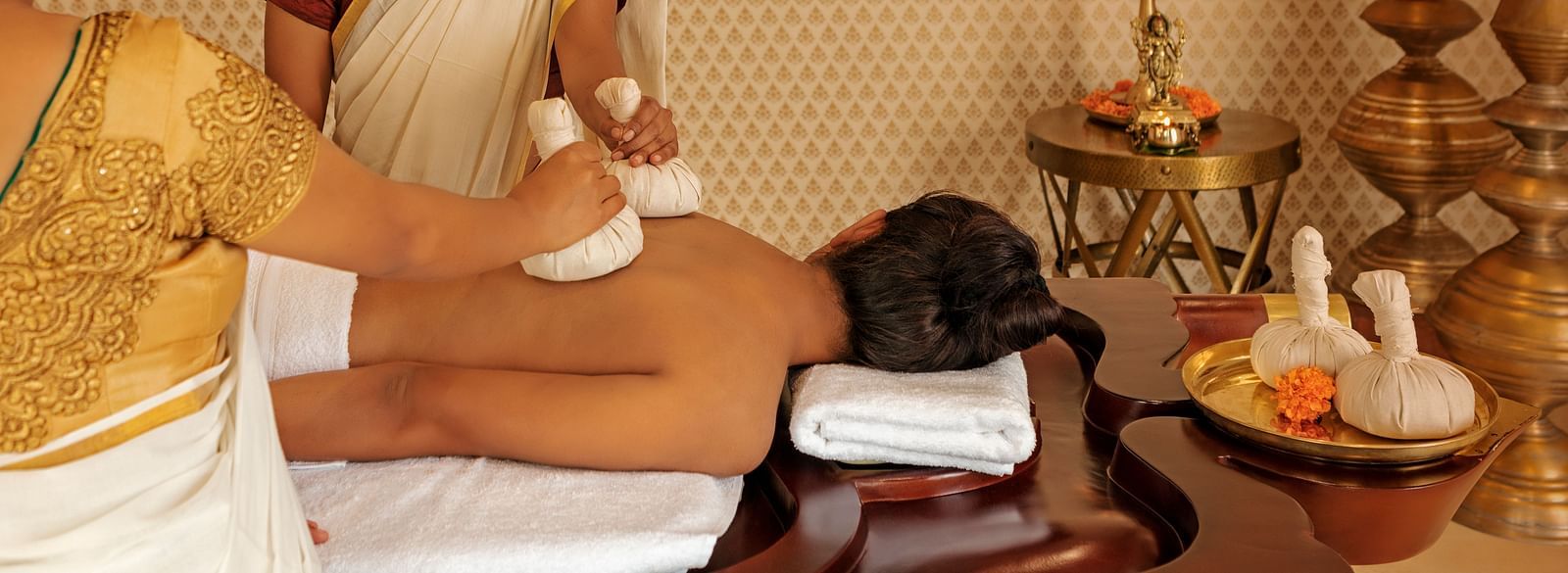
Panchakarma Packages
Panchakarma, derived from the Sanskrit term for 'five actions', is an ancient Ayurvedic ritual designed to purify and rejuvenate the body, mind, and spirit. This transformative treatment seeks to harmonise the three vital energies—Vata, Pitta, and Kapha—each representing a unique blend of your physical, emotional, and mental essence.
The journey of your Ayurvedic Panchakarma treatment in Bangalore with us unfolds in three phases: poorva karma—the preparatory stage, where the body is gently readied; pradhana karma—the core procedures, the heart of healing; and paschat karma—the post-treatment rituals that seal the benefits. Each phase carries its rhythm, with therapies tailored to your unique body type, dosha imbalances, age, and ailments, and even the changing seasons. While the rewards of Panchakarma unfold throughout the process, true transformation is found by embracing the entire journey, ensuring lasting wellness long after the final treatment.
14 Nights (Rates Valid from 1st April 2025 to March 2027)
| Room Type | Garden Tented Cottage/Poolside Cottage | Garden Suite Cottage | ||
|---|---|---|---|---|
| Single | Double | Single | Double | |
| Package Cost | US $8,420 | US $13,500 | US $10,400 | US $15,320 |
| Service Charge | US $842 | US $1,350 | US $1,040 | US $1,532 |
| Net Rate | US $9,262 | US $14,850 | US $11,440 | US $16,852 |
| Inclusions | Sessions | Minutes |
|---|---|---|
| Consultations with Ayurveda Doctors | 2 | 45 |
| Body Composition Analysis Based on Ayurveda | 1 | - |
| Individual Ayurveda Diet Plan Based on Doctor's Advice | 1 | - |
| Personalised Ayurvedic Therapies per Person | ||
| Abhyanga | 15 | 30 |
| Udwarthanam | 3 | 30 |
| Choornapinda Swedam | 3 | 30 |
| Patrapinda Swedam | 3 | 30 |
| Nasyam | 3 | 30 |
| Narangakizhi | 5 | 30 |
| Navarakizhi/Pizichil | 7 | 30 |
| Netratarpana | 3 | 30 |
| Karnapoorana | 3 | 30 |
| Kashaya Vasti | 2 | 30 |
| Snehavasti | 4 | 30 |
| Shirodhara | 5 | 30 |
| Vicara Sneha | 5 | 15 |
| Thalam | 10 | - |
| Virechana | 1 | - |
| Personalised Pranayama Sessions | 2 | 60 |
| Personalised Meditation Sessions | 2 | 60 |
| Personalised Yoga Nidra (Deep Relaxation) Sessions | 2 | 60 |
| Inputs on Ayurveda and Well-being | 1 | 45 |
| Session on Integrating Yoga into Daily Life | 1 | 45 |
| Detailed Session on Lifestyle Recommendation and Counselling | 1 | 60 |
| Daily Doctor Consultations | ||
| Free Medicines During the Treatment | ||
| Round-trip Airport Transfers | ||
| Service Charges (10%) and Applicable Government Taxes |
21 Nights (Rates Valid from 1st April 2025 to March 2027)
| Room Type | Garden Tented Cottage/Poolside Cottage | Garden Suite Cottage | ||
|---|---|---|---|---|
| Single | Double | Single | Double | |
| Package Cost | US $11,460 | US $18,020 | US $14,430 | US $20,750 |
| Service Charge | US $1,146 | US $1,802 | US $1,443 | US $2,075 |
| Net Rate | US $12,606 | US $19,822 | US $15,873 | US $22,825 |
| Inclusions | Sessions | Minutes |
|---|---|---|
| Consultations with Ayurveda Doctors | 2 | 45 |
| Body Composition Analysis Based on Ayurveda | 1 | - |
| Individual Ayurveda Diet Plan Based on Doctor's Advice | 1 | - |
| Personalised Ayurvedic Therapies per Person | ||
| Abhyanga | 18 | 30 |
| Udwarthanam | 3 | 30 |
| Choornapinda Swedam | 3 | 30 |
| Patrapinda Swedam | 5 | 30 |
| Nasyam | 3 | 30 |
| Narangakizhi | 7 | 30 |
| Navarakizhi/Pizichil | 7 | 30 |
| Netratarpana | 3 | 30 |
| Karnapoorana | 3 | 30 |
| Kashaya Vasti | 2 | 30 |
| Snehavasti | 5 | 30 |
| Shirodhara | 5 | 30 |
| Vicara Sneha | 15 | |
| Snehapanam | 5 | 30 |
| Thalam | 14 | - |
| Mukhalepam | 1 | 60 |
| Virechana | 1 | - |
| Personalised Pranayama Sessions | 3 | 60 |
| Personalised Meditation Sessions | 3 | 60 |
| Personalised Yoga Nidra (Deep Relaxation) Sessions | 2 | 60 |
| Inputs on Ayurveda and Well-being | 1 | 45 |
| Session on Integrating Yoga into Daily Life | 1 | 45 |
| Detailed Session on Lifestyle Recommendation and Counselling | 1 | 60 |
| Daily Doctor Consultations | ||
| Free Medicines During the Treatment | ||
| Round-trip Airport Transfers | ||
| Service Charges (10%) and Applicable Government Taxes |
28 Nights (Rates Valid from 1st April 2025 to March 2027)
| Room Type | Garden Tented Cottage/Poolside Cottage | Garden Suite Cottage | ||
|---|---|---|---|---|
| Single | Double | Single | Double | |
| Package Cost | US $14,140 | US $21,830 | US $18,110 | US $25,170 |
| Service Charge | US $1,414 | US $2,183 | US $1,811 | US $2,517 |
| Net Rate | US $15,554 | US $24,013 | US $19,921 | US $27,687 |
| Inclusions | Sessions | Minutes |
|---|---|---|
| Consultations with Ayurveda Doctors | 2 | 45 |
| Body Composition Analysis Based on Ayurveda | 1 | - |
| Individual Ayurveda Diet Plan Based on Doctor's Advice | 1 | - |
| Personalised Ayurvedic Therapies per Person | ||
| Abhyanga | 16 | 30 |
| Udwarthanam | 3 | 30 |
| Choornapinda Swedam | 3 | 30 |
| Patrapinda Swedam | 5 | 30 |
| Nasyam | 3 | 30 |
| Narangakizhi | 5 | 30 |
| Navarakizhi/Pizichil | 10 | 30 |
| Netratarpana | 3 | 30 |
| Karnapoorana | 3 | 30 |
| Kashaya Vasti | 3 | 30 |
| Snehavasti | 5 | 30 |
| Shirodhara | 7 | 30 |
| Vicara Sneha | 15 | |
| Snehapanam | 5 | 30 |
| Thalam | 21 | - |
| Mukhalepam | 1 | 60 |
| Virechana | 1 | - |
| Personalised Yogasana Session | 2 | 60 |
| Personalised Pranayama Sessions | 3 | 60 |
| Personalised Meditation Sessions | 3 | 60 |
| Personalised Yoga Nidra (Deep Relaxation) Sessions | 2 | 60 |
| Inputs on Ayurveda and Well-being | 1 | 45 |
| Session on Integrating Yoga into Daily Life | 1 | 45 |
| Detailed Session on Lifestyle Recommendation and Counselling | 1 | 60 |
| Daily Doctor Consultations | ||
| Free Medicines During the Treatment | ||
| Round-trip Airport Transfers | ||
| Service Charges (10%) and Applicable Government Taxes |
Package Inclusions
- Personalised Yoga Instructional Sessions per room - 2 Sessions for 60 minutes each
- Personalised Pranayama Session per room - 1 Session for 60 minutes
- Personalised Meditation Session per room - Session for 60 minutes
- Personalised Yogic Kriyas - 2 Sessions for 15 minutes each
- Rejuvenation Massages per person (Balinese / Swedish / Thai / Aromatherapy / Abhyanga) - 1 Session for 60 minutes
- Service Charges (10%) and applicable Government taxes
Package Inclusions (Applicable to All the Above Packages)
- Scheduled Yoga sessions in the morning (90 minutes) and evening (60 minutes).
- Scheduled daily Sound meditation session (45 minutes).
- Scheduled Yogic cleansing Kriyas - Jala Neti/Vaman Dhauti.
- Daily doctor consultations.
- Dietary consultations.
- Gourmet vegetarian meals (Breakfast, lunch & dinner)/Dosha-specific meal plans/Special dietary plans as directed by doctors/dieticians.
- Steam, Sauna and Reflexology path as advised by the doctors.
- Use of recreational facilities - Swimming pool, library, Reflexology path, bird watching, cricket nets, jogging trail, etc.
Please Note
- Ayurveda is not about instantaneous results, although you will see many immediate benefits. In accordance with the laws of nature, it will take time to gently restore full balance. Our treatments, products and facilities are not intended to be a substitute for professional medical advice and treatment of any condition(s), medical or otherwise, that you may have. We use products not known to cause any allergic or adverse reactions. However, the well-being of our guests is of utmost importance to us, and therefore, we request you to please advise us of any known allergies, hypersensitivity to any ingredients, skin conditions or disorders, illnesses, injuries, recent surgeries and any other health conditions or relevant information. This will help us to ensure that your needs are taken care of and that your retreat experience does not in any way interfere with any medical or health conditions that you may have.
- The type and duration of the treatments may vary according to the direction of doctor, and the process may change depending on the guest’s body type and condition.
- The final decision of the programme will be taken by the consulting doctor.
Please click here to check out the cancellation policies.
Explore Our Other Packages

Standard Nightly Rates
Check out the nightly rates for each of our accommodations, along with their inclusions.
Explore Package
Yoga Retreat Packages
Experience guided Yogasana sessions, blending the classical Hatha Yoga tradition with the dynamic flow of Ashtanga Vinyasa.
Explore Package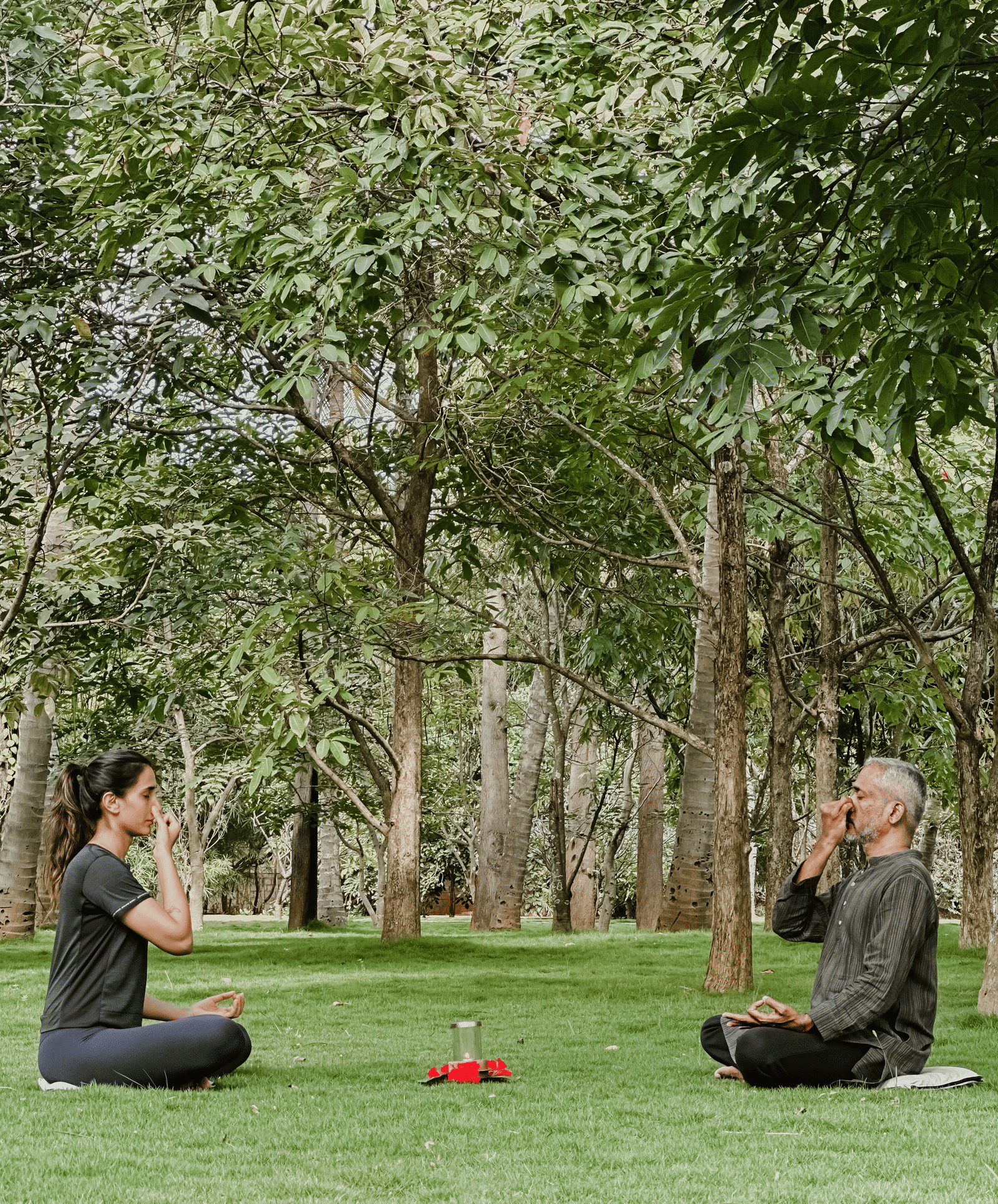
Wellness Packages
These packages offer a curated itinerary, blending Yoga, meditation, and Pranayama sessions with rejuvenating massages, immersive cooking classes, and more.
Explore Package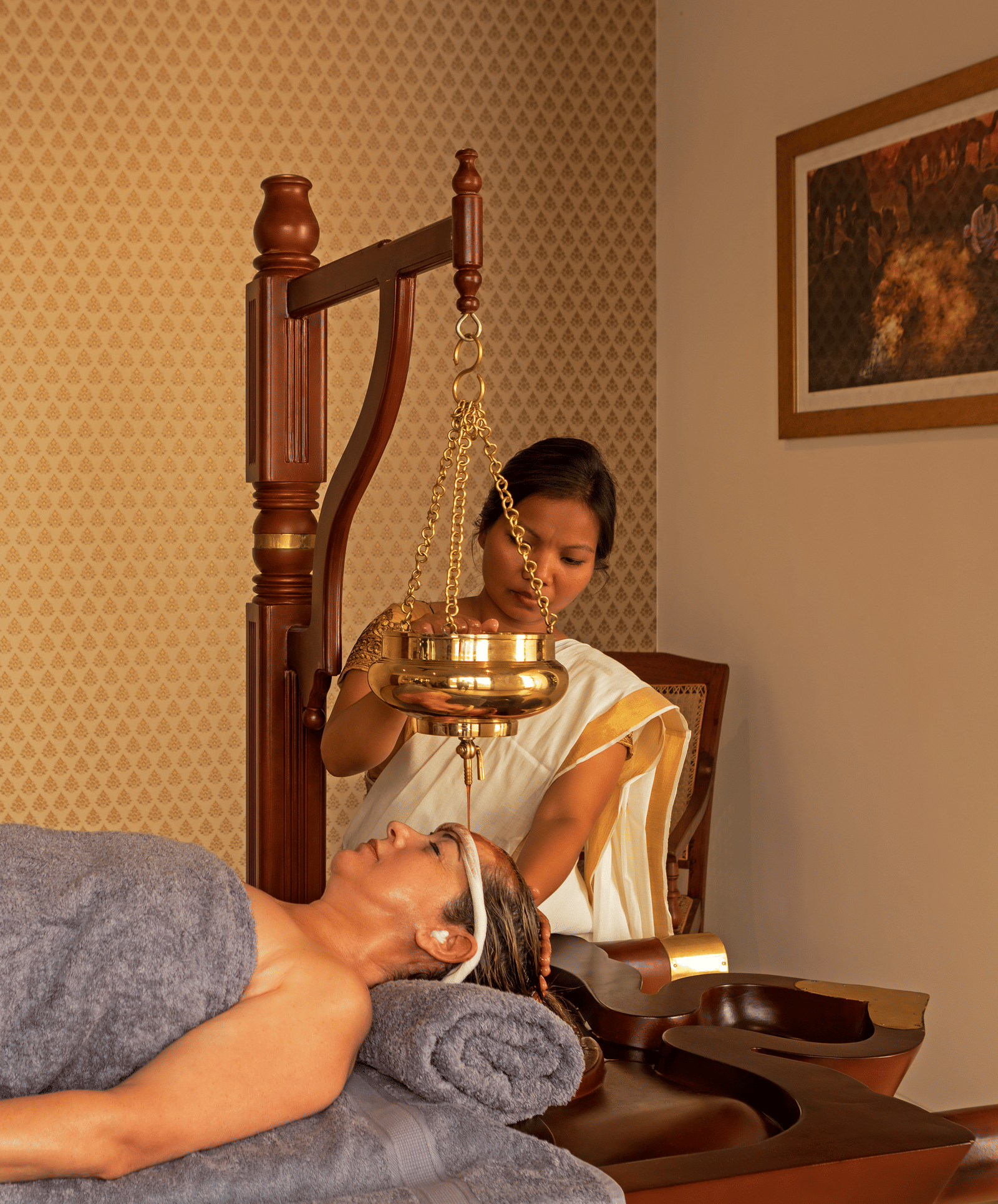
Ayurvedic Rejuvenation Packages
Personalised therapies, internal remedies, mindful practices, and dietary guidance are thoughtfully tailored to your needs under these packages.
Explore Package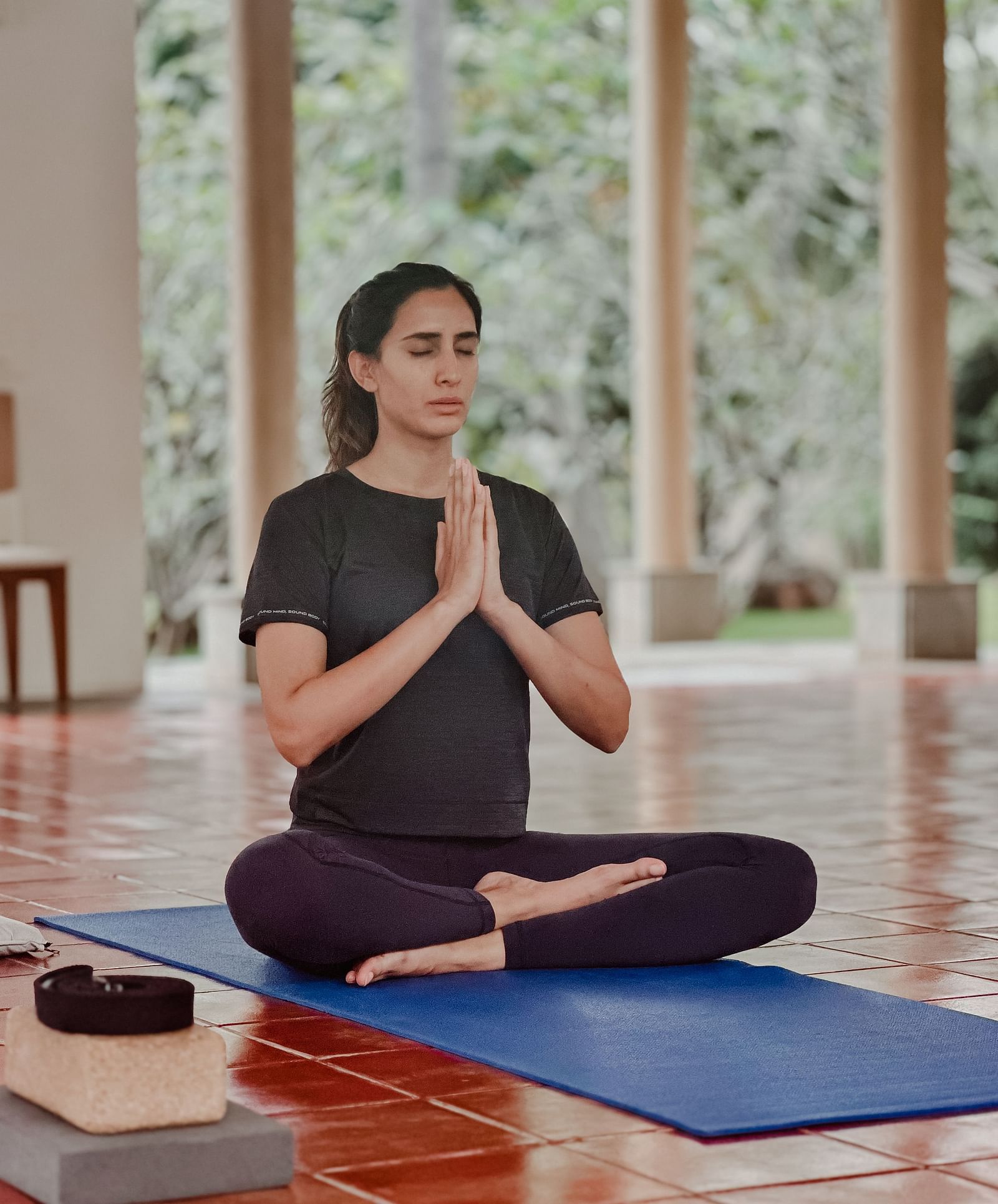
Silent Retreat Packages
In these packages, embark on a 7-night Mouna Retreat designed to help you step back, introspect, calm the mind, and realign your life goals.
Explore Package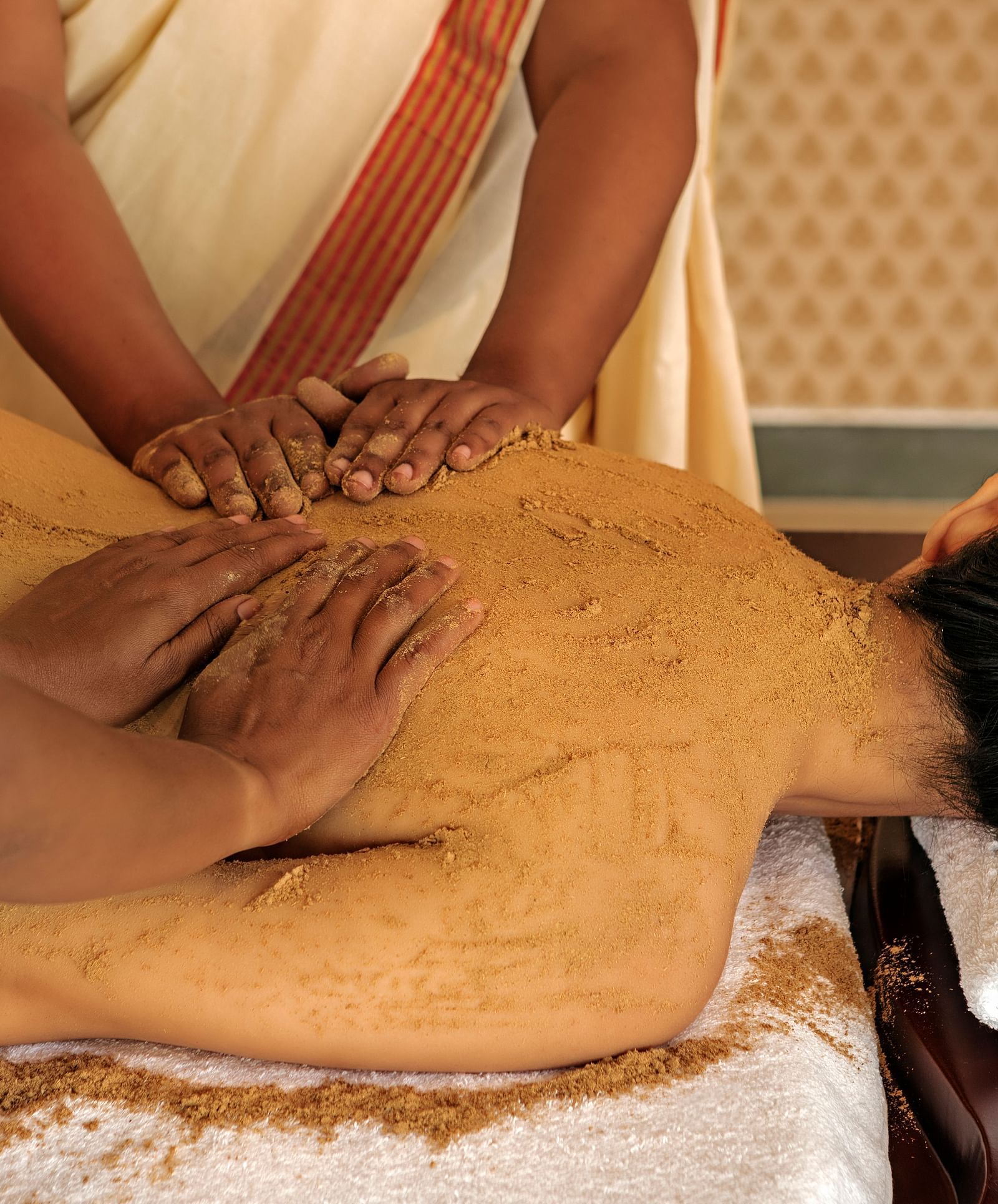
Detox Packages
These packages combine gentle yoga, Pranayama, meditation, naturopathy treatments, and more to detox and restore your body completely.
Explore Package